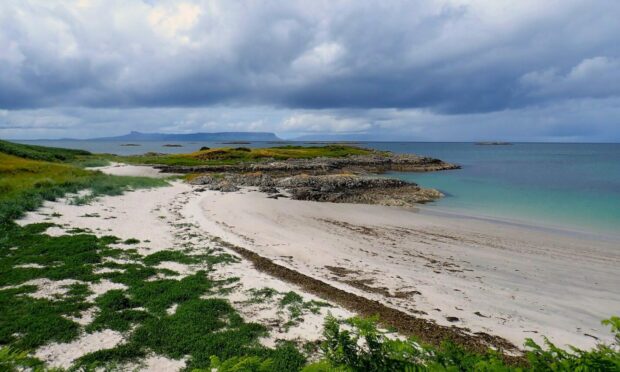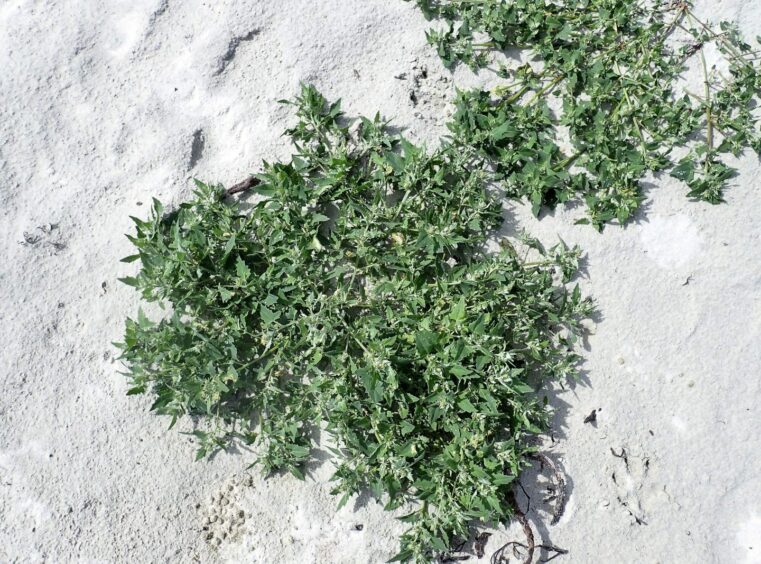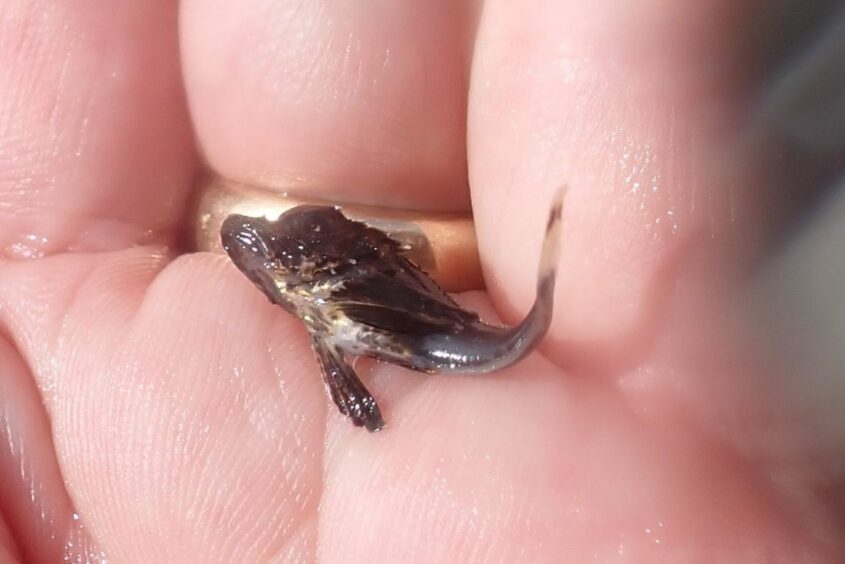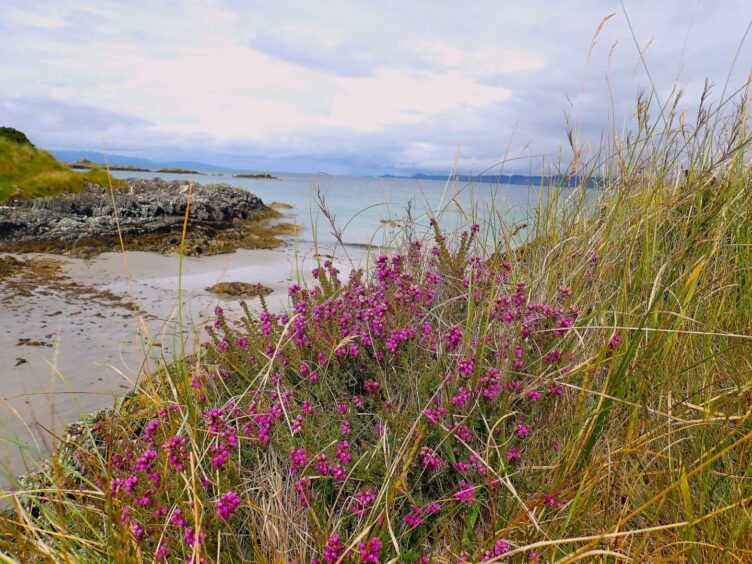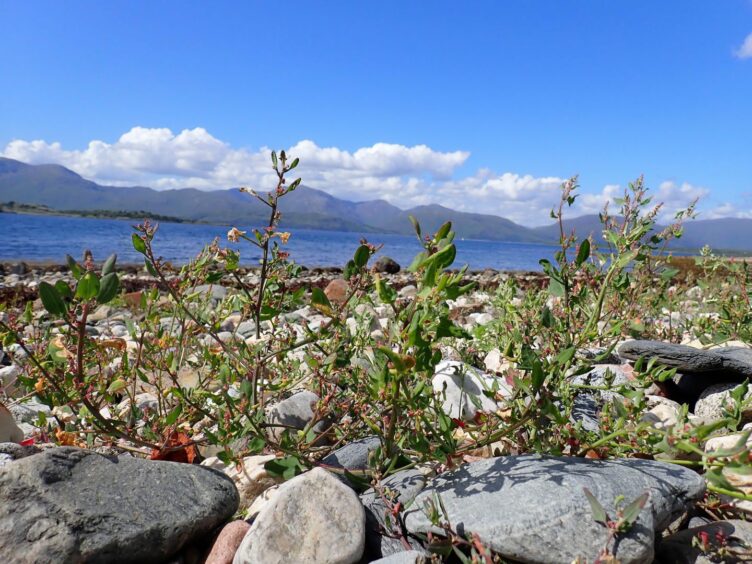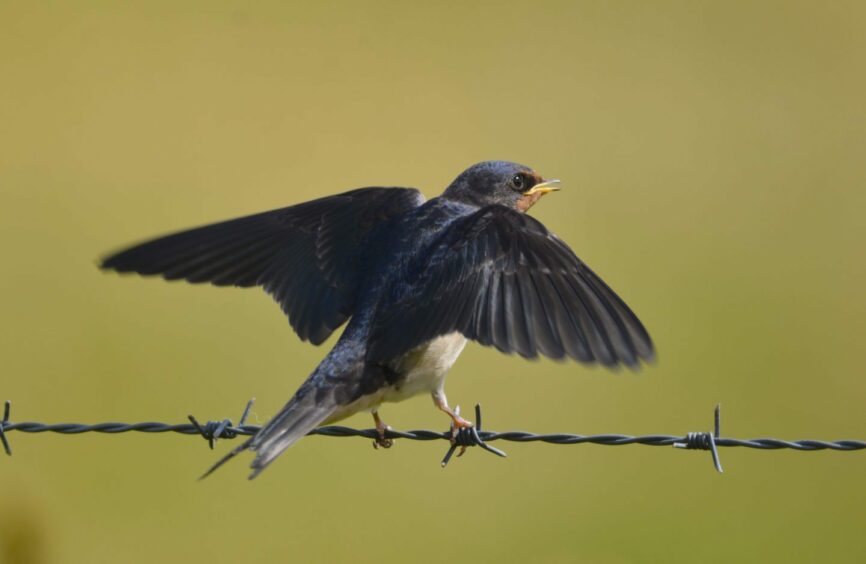It was a quintessentially Scottish moment; persistent drizzle, then the clouds lifted like the unveiling of a misty shroud and sparkling sunbeams danced across the calm, turquoise waters of Camusdarach Beach near Mallaig.
This was Scotland at its best; moody clouds, an emerging sun and wide seas backdropped by the islands of Eigg, Muck, Rum and Skye.
When I was last here in May, great northern divers had bobbed in the water close inshore, their haunting calls drifting across the languid air, but now the sea was strangely devoid of birdlife.
So, I turned my attention instead towards the strandline of the beach and wandered along its irregular scattering of seaweed in search of seashells and other natural debris.
Within a short while, I had found otter shells, whelks and tellins. Above the strandline, on the upper shore, spear-leaved orache caught my eye – a beach-living plant that finds fragile tenure in the windblown sand.
Tolerant of salty conditions, spear-leaved orache is a remarkable plant that miraculously gains sustenance from within the loose-grained meagre pickings of sand and shingle. I imagine rotting seaweed provides the nutrients that helps sustain its growth, while the frequent west coast rains provide sufficient moisture in the free-draining sand.
The leaves of orache are said to taste good and can be used in the kitchen like spinach. In the past, it was popular as an ingredient for fortifying soups, aiding the recovery of those who were poorly. I find it sad that such botanical knowledge is lost nowadays – our empathy and connection with nature loosened beyond recovery.
Beyond the upper shore, the daisy-like blooms of sea mayweed swept across the edge of sheep-grazed pasture, and on grassy knolls, clusters of bell heather shone in a purple sheen. I ventured down to the shore once more, and in a rockpool, a small tadpole-like fish with prominent side fins scooted back and forwards, panicked by my shadow.
I scooped it out with cupped hands and identified it as a juvenile grey gurnard. Gurnards are intriguing fish, which use their specially adapted pelvic fins as legs, enabling them to ‘walk’ along the seabed in search of small invertebrate prey.
The emergence of the warming sun had brought swallows out in a feeding frenzy and on the wire of a nearby sheep fence, a newly fledged youngster perched, waving its wings frantically to attract the parents for food. This little swallow was the embodiment of beauty, with a blue-glossed back and creamy underparts.
In a few weeks’ time, this fragile bundle of feathers will embark upon a marathon migration to southern Africa.
For now, the warm summer breeze of Camusdarach ruffled the young swallow’s feathers in a gentle caress, and I felt a strange sense of comfort in being privy to its last carefree moments.
The perils ahead are unimaginable, yet with a little luck, this wondrous creation of nature will safely return next year to raise its own family under the brooding shadow of the Hebrides.
